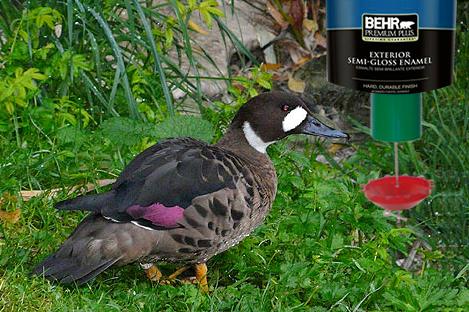
The bronze winged duck is so called for its bronze colored speculum. It is also known as "pato perro" or "dog-duck" due to the harsh barking call of the female. Another name for this dabbling duck is the spectacled duck. Though a dabbling duck, its closest relative is either the crested duck or the Brazilian duck. They are part of the South American lineage which diverged early from the other dabbling ducks.
The Bronze-Winged male and female look similar. They have a brown head with a white band around its neck. There is a large white patch between the eye and the grey beak. The upper parts are mottled brown and light brown with scalloping on the back. The underparts are grayish brown. The wings are very dark with a bronze hued speculum. The legs and feet are a light yellowish orange color.
PECk-O-MATIC Automatic Duck Feeder is maintenance free, but should be kept clean as with any feeder. The easily regulated non-clog feed release mechanism makes fresh food always available. To feed crumble or milo, the 3/8 inch regulator disc is the most suitable. When feeding cracked corn or peas, it is recommended to use PECk-O-MATIC Automatic Duck Feeder's ½-inch regulator disc to feed these ducks.
The bronze winged breed lives in forested rivers, lakes, pools, ponds and fast flowing streams. They feed on aquatic vegetation and seeds, insects and larvae. The clutch size is 4-6 dark cream colored eggs. The incubation period in captivity has been recorded to be about a month. Bronze winged ducks are typically found in pairs or small groups. The spectacled duck is most common in the Andean valleys of southern Chile and west-central Argentina, south as far as Tierra del Fueg.